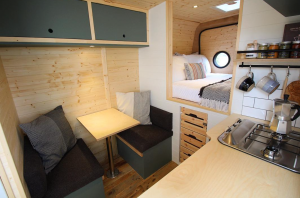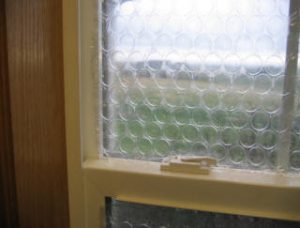The cold winter season can take a toll on your health. For regular homes, there are plenty of ways to insulate it during the winter. But for people living in an RV, this can be the most challenging season of the month.
No matter how much you try to warm up your RV inside, windows will keep messing it up. That’s why you should know how to insulate your RV windows effectively. Window insulation is an essential RV and conversion van accessory, and there are plenty of ways to do them – each has their own share of pros and cons.
Ways To Insulate Your RV Windows Effectively
1. Insulation Foam 
One of the fastest and best ways to insulate your RV is covering your windows and walls with insulation foams. They’re durable, light and can easily be installed.
However, the biggest cons for this is that it blocks away the best source of heat: sunlight. Energy consumption will be higher as well, since there’s no light or air that can pass through inside your RV. This might not be an issue to some, but electricity will have to run all day and night to keep you well-lit inside.
2. Shrink Plastic Film
You can easily buy shrink plastics and cover your windows with it from the outside or even from the inside. The most important thing about shrink plastics is installing them to your windows and making sure there’s a bit of space between them.
Shrink plastics work by trapping warmth sunshine from the outside during the day. It traps warmth inside the space between the plastic film and your window, making it warm during the night.
The only problem for shrink plastic is that installing it is quite a big task. If you don’t have time to stick it properly to all the windows, then this is not for you. Some even complain about removing it after messes up with their van’s paint job.
2. Bubble Wrap 
If you’re looking for the quickest way to insulate your windows, you can also try this method. Bubble wraps are plastic and can be thick enough to protect your windows. Although proper installation and sometimes layering, should be done to make it more effective.
Cons for using this technique is that it doesn’t do much with aesthetics. If you’ll have guests coming over, you have to hide this eyesore with some window blinds or curtains.
3. Styrofoam Sheeting
Another way to keep heat from escaping your RV is covering your windows with styrofoam. This works like the insulation foam, but a tad cheaper.
Like the insulation foam, it prevents light from passing through. Also, styrofoam sheets spread all over your windows may not look very pleasing to the eyes. If installing them with tapes are a total eyesore, try using velcro with it so you can attach and detach it when needed.
4. Plexiglass
Trapping sunlight warmth to heat your windows at night can also be achievable by using Plexiglass as a window cover. Remember that it should have space between the actual window and the Plexiglass.
Make sure that it’s airtight as you’re trapping heat inside both glass. Using velcro strips may not be advisable since it will create air passage. Sealing it completely with a screw will do better.
5. DIY it
If you have time to prepare for it, might as well give it a good shot at DIY. Piece together layers of fabric, cotton and styrofoam, make sure they are measured properly to your windows.
This layering of heat-trappers will make for the best RV window insulation. If you need to open your windows during the day, make sure your little DIY project can be attached or detached if necessary.
Related: DIY Van Window Covers
Try Mix-and-Matching RV Window Insulation
These techniques are effective in different ways. It’s up to you where you want to apply them. For others, window placements can help in determining which of these techniques should they incorporate.
For example, some would see covering room windows totally during the winter is a better option. While kitchen windows need to be opened once in a while during the day.
You can also double it up by using two different techniques at once. The bubble wrap with a plastic film or Plexiglass can be done simultaneously, same with the Insulation Foam and Plexiglass – whichever you think is most effective for you.
But if you think it’s your RV windows that are causing the problem of insulation, you have to repair it before the cold season starts. Us at Peninsula Glass can figure it out for you, and help you more about insulation. We can assist you in choosing the best windows for your RV as well. Contact us today!

